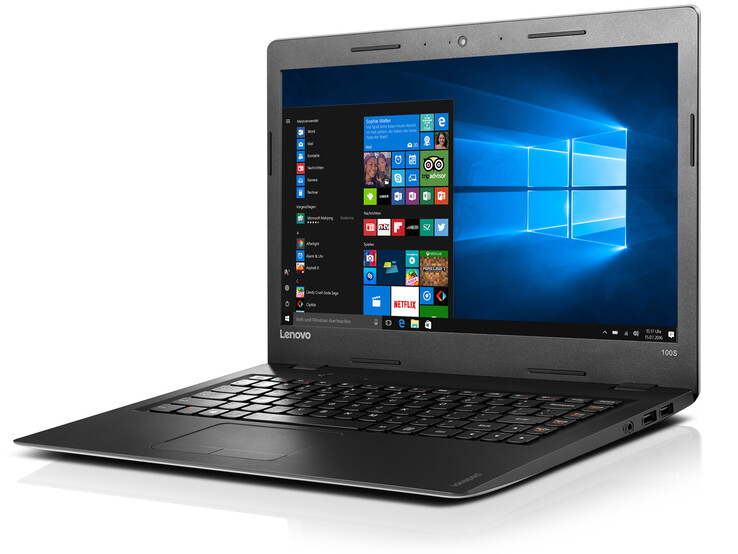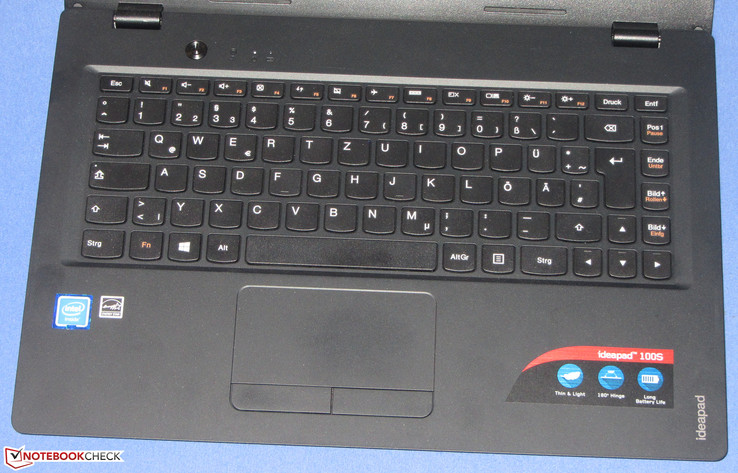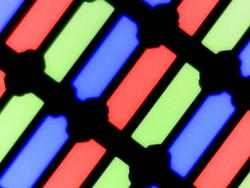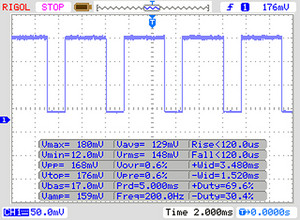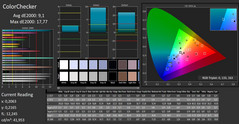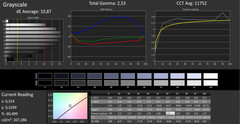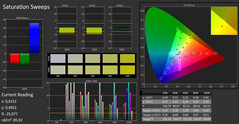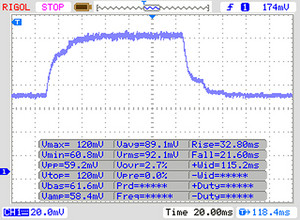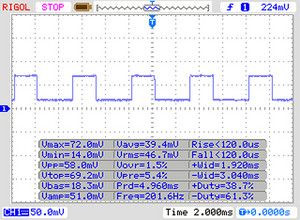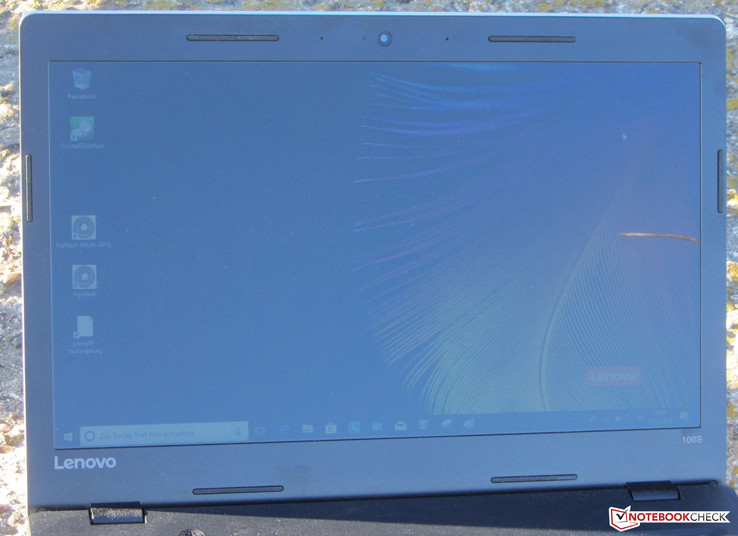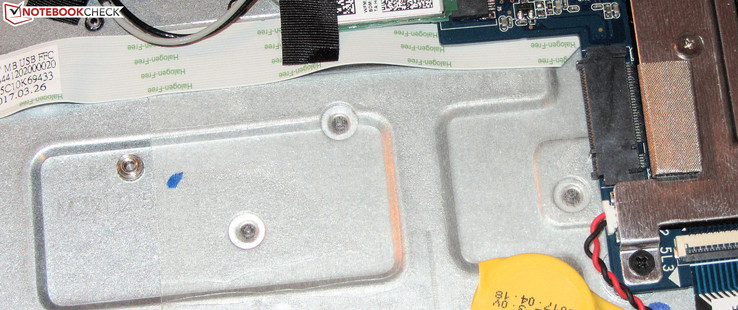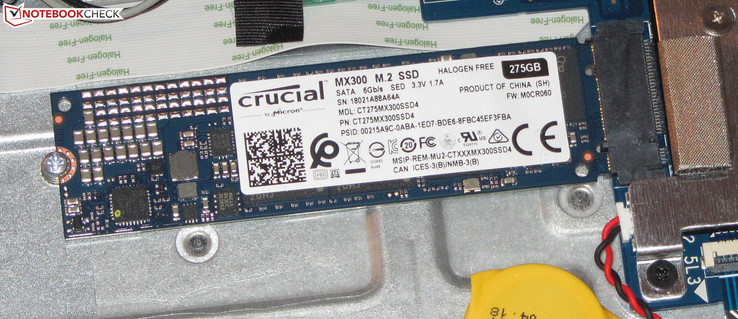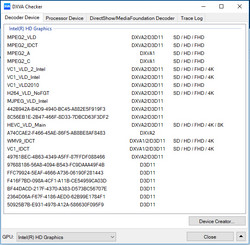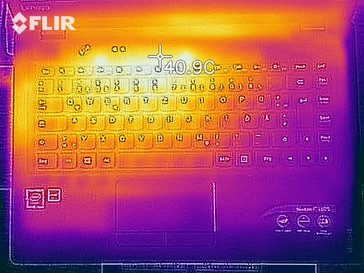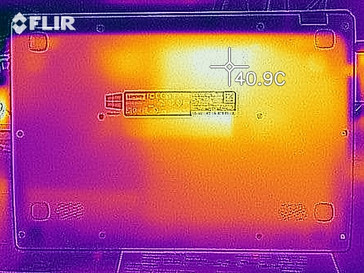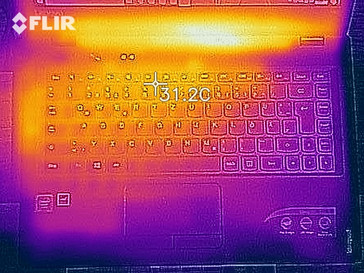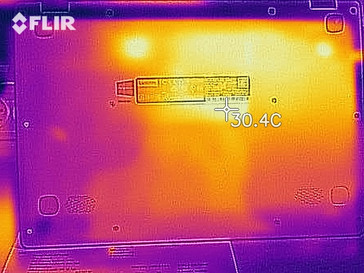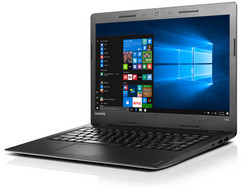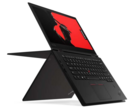Lenovo IdeaPad 100s-14IBR (N3060, HD 400) Laptop Review

The Lenovo IdeaPad 100s-14IBR is a simple 14-inch office notebook that is powered by an Intel Braswell processor and is powerful enough for light office applications, Internet browsing, and streaming services. We will be comparing the IdeaPad 100s-14IBR against the HP Stream 14, the Acer Aspire 1 A114-41, the Lenovo IdeaPad 320s, the Lenovo IdeaPad 120s, the HP 14, and the Chuwi LapBook 14-inch 2017.
Case and Equipment
The IdeaPad 100s-14IBR is entirely made of plastic with a two-tone color effect. The display frame and top case are black while the bottom case and display lid are silver. The case of our test device has no visible manufacturing defects. Unfortunately, the case lacks rigidity with it being possible to twist the bottom case without too much effort. The battery is built-in and there is no maintenance cover.
The lack of a maintenance cover means that the bottom cover must be removed to access the internal components. Fortunately, this is an easy process. Once all the screws have been undone the bottom case can be detached without needing extra tools. Removing the bottom case reveals among others the battery, the BIOS battery and an empty M.2-2280 slot, the latter of which can be occupied with an SSD.
Overall, the I/O is acceptable. There is an HDMI port for connecting the IdeaPad 100s-14IBR to an external monitor. There are three USB Type-A ports, two of which are USB 2.0 speed while the other is the faster USB 3.1 speed. Lenovo includes a microSD card reader, thereby omitting the option of natively connecting full-sized SD cards. We tested the performance of the microSD card reader using our reference card, the Toshiba Exceria Pro M501 microSDXC 64 GB. The results are impressive, with the IdeaPad 100s-14IBR achieving a maximum transfer speed of 85.4 MB/s with large blocks of data. The microSD card reader averaged 53.8 MB/s while transferring 250 JPG files that were approximately 5 MB each.
Wireless connectivity is provided by an Intel Dual Band Wireless-AC 3160 chip, which supports not only the 802.11 a/b/g/n standards but also the fast ac standard. We tested transmissions at optimal conditions by placing our test device close to our server with no other Wi-Fi devices in the vicinity. The IdeaPad 100s-14IBR supports only 1x1 technology, which explains why we measured just average transmission speeds.
Connectivity
| SD Card Reader | |
| average JPG Copy Test (av. of 3 runs) | |
| HP Stream 14-ax002ng (Toshiba Exceria Pro SDXC 64 GB UHS-II) | |
| Lenovo IdeaPad 320s-14IKB (Toshiba Exceria Pro SDXC 64 GB UHS-II) | |
| Acer Aspire 1 A114-31-C472 (Toshiba Exceria Pro SDXC 64 GB UHS-II) | |
| Lenovo Ideapad 120S-14IAP (Toshiba Exceria Pro M401 Reference-Card) | |
| Average of class Office (22.4 - 198.5, n=28, last 2 years) | |
| Lenovo IdeaPad 100s-14IBR 80R900K5GE (Toshiba Exceria Pro M501 microSDXC 64GB) | |
| Chuwi LapBook 14 inch 2017 | |
| HP 14-bp001ng (Toshiba Exceria Pro SDXC 64 GB UHS-II) | |
| maximum AS SSD Seq Read Test (1GB) | |
| Lenovo IdeaPad 320s-14IKB | |
| Acer Aspire 1 A114-31-C472 (Toshiba Exceria Pro SDXC 64 GB UHS-II) | |
| Lenovo IdeaPad 100s-14IBR 80R900K5GE (Toshiba Exceria Pro M501 microSDXC 64GB) | |
| Lenovo Ideapad 120S-14IAP (Toshiba Exceria Pro M401 Reference-Card) | |
| HP Stream 14-ax002ng (Toshiba Exceria Pro SDXC 64 GB UHS-II) | |
| Average of class Office (25 - 249, n=26, last 2 years) | |
| Chuwi LapBook 14 inch 2017 | |
| HP 14-bp001ng (Toshiba Exceria Pro SDXC 64 GB UHS-II) | |
| Networking | |
| iperf3 transmit AX12 | |
| Lenovo Ideapad 120S-14IAP | |
| Lenovo IdeaPad 100s-14IBR 80R900K5GE | |
| Lenovo IdeaPad 320s-14IKB | |
| Chuwi LapBook 14 inch 2017 | |
| HP Stream 14-ax002ng | |
| Acer Aspire 1 A114-31-C472 | |
| HP 14-bp001ng | |
| iperf3 receive AX12 | |
| Chuwi LapBook 14 inch 2017 | |
| Acer Aspire 1 A114-31-C472 | |
| Lenovo Ideapad 120S-14IAP | |
| HP Stream 14-ax002ng | |
| Lenovo IdeaPad 100s-14IBR 80R900K5GE | |
| Lenovo IdeaPad 320s-14IKB | |
| HP 14-bp001ng | |
Input Devices
The IdeaPad 100s-14IBR has a chiclet keyboard that lacks a backlight. The flat, slightly roughened keys have a short travel with a clear pressure point. There is noticeable movement on the keyboard deck while typing, more so in the middle than at the edges. Overall, the keyboard is decent for home use, but prolific writers would not like typing for extended periods on the IdeaPad 100s-14IBR.
The multi-touch touchpad measures 9.6 x 4.9 cm, which is large enough to use gesture controls. These can be individually switched on or off in the touchpad settings menu. The touchpad has a smooth surface which is easy for fingers to move across. Beneath the touchpad are two dedicated mouse buttons. These have a short stroke and a clear pressure point.
Display
The IdeaPad 100s-14IBR has a 14-inch display with a 1366x768 native resolution. Using X-Rite i1Pro 2 we measured an average brightness level of 200.8 cd/m², which is extremely low. We measured the contrast level at 603:1, which is fair for a device in this price range.
Unfortunately, there is PWM display flicker at 200 Hz for brightness levels lower than and including 90%. This could cause headaches and eye issues for those who are sensitive to PWM.
| |||||||||||||||||||||||||
Brightness Distribution: 78 %
Center on Battery: 163 cd/m²
Contrast: 603:1 (Black: 0.34 cd/m²)
ΔE ColorChecker Calman: 9.1 | ∀{0.5-29.43 Ø4.78}
ΔE Greyscale Calman: 10.87 | ∀{0.09-98 Ø5}
58% sRGB (Argyll 1.6.3 3D)
37% AdobeRGB 1998 (Argyll 1.6.3 3D)
40.08% AdobeRGB 1998 (Argyll 3D)
57.9% sRGB (Argyll 3D)
38.79% Display P3 (Argyll 3D)
Gamma: 2.53
CCT: 11752 K
| Lenovo IdeaPad 100s-14IBR 80R900K5GE TN LED, 1366x768, 14" | HP Stream 14-ax002ng TN LED, 1366x768, 14" | HP 14-bp001ng TN LED, 1366x768, 14" | Acer Aspire 1 A114-31-C472 TN LED, 1366x768, 14" | Lenovo Ideapad 120S-14IAP TN LED, 1366x768, 14" | Chuwi LapBook 14 inch 2017 IPS, 1920x1080, 14.1" | Lenovo IdeaPad 320s-14IKB IPS, 1920x1080, 14" | |
|---|---|---|---|---|---|---|---|
| Display | -5% | 4% | 7% | 7% | 10% | 7% | |
| Display P3 Coverage (%) | 38.79 | 36.84 -5% | 40.43 4% | 41.31 6% | 41.32 7% | 42.53 10% | 41.65 7% |
| sRGB Coverage (%) | 57.9 | 55.5 -4% | 60.8 5% | 61.7 7% | 62 7% | 63.6 10% | 61.8 7% |
| AdobeRGB 1998 Coverage (%) | 40.08 | 38.06 -5% | 41.77 4% | 42.72 7% | 42.7 7% | 43.93 10% | 43.03 7% |
| Response Times | -33% | 10% | 6% | 6% | -36% | -50% | |
| Response Time Grey 50% / Grey 80% * (ms) | 53 ? | 46 ? 13% | 43 ? 19% | 40 ? 25% | 35.2 ? 34% | 32.8 ? 38% | 42 ? 21% |
| Response Time Black / White * (ms) | 14 ? | 25 ? -79% | 14 ? -0% | 16 ? -14% | 17.2 ? -23% | 29.2 ? -109% | 31 ? -121% |
| PWM Frequency (Hz) | 200 ? | 200 ? | 1000 ? | 495 ? | 200 ? | 352 ? | |
| Screen | -72% | -13% | 0% | -12% | 16% | 28% | |
| Brightness middle (cd/m²) | 205 | 220 7% | 189 -8% | 206 0% | 257.4 26% | 247.7 21% | 274 34% |
| Brightness (cd/m²) | 201 | 207 3% | 190 -5% | 187 -7% | 239 19% | 243 21% | 253 26% |
| Brightness Distribution (%) | 78 | 78 0% | 88 13% | 82 5% | 87 12% | 92 18% | 85 9% |
| Black Level * (cd/m²) | 0.34 | 0.53 -56% | 0.34 -0% | 0.54 -59% | 0.32 6% | 0.31 9% | |
| Contrast (:1) | 603 | 357 -41% | 606 0% | 477 -21% | 774 28% | 884 47% | |
| Colorchecker dE 2000 * | 9.1 | 29.43 -223% | 11.85 -30% | 10.01 -10% | 11.8 -30% | 6.4 30% | 5.74 37% |
| Colorchecker dE 2000 max. * | 17.77 | 76.62 -331% | 20.61 -16% | 16.72 6% | 28 -58% | 24.3 -37% | 8.26 54% |
| Greyscale dE 2000 * | 10.87 | 13.14 -21% | 13.6 -25% | 11.11 -2% | 13.3 -22% | 4.5 59% | 4.61 58% |
| Gamma | 2.53 87% | 2.18 101% | 2.49 88% | 2.43 91% | 2.2 100% | 2.33 94% | 2.14 103% |
| CCT | 11752 55% | 15985 41% | 16588 39% | 12726 51% | 16811 39% | 7318 89% | 7281 89% |
| Color Space (Percent of AdobeRGB 1998) (%) | 37 | 35 -5% | 49 32% | 39 5% | 39 5% | 39.8 8% | 39 5% |
| Color Space (Percent of sRGB) (%) | 58 | 55 -5% | 61 5% | 62 7% | 62 7% | 62.9 8% | 61 5% |
| Total Average (Program / Settings) | -37% /
-50% | 0% /
-7% | 4% /
2% | 0% /
-6% | -3% /
8% | -5% /
14% |
* ... smaller is better
Screen Flickering / PWM (Pulse-Width Modulation)
| Screen flickering / PWM detected | 200 Hz | ≤ 90 % brightness setting | |
The display backlight flickers at 200 Hz (worst case, e.g., utilizing PWM) Flickering detected at a brightness setting of 90 % and below. There should be no flickering or PWM above this brightness setting. The frequency of 200 Hz is relatively low, so sensitive users will likely notice flickering and experience eyestrain at the stated brightness setting and below. In comparison: 53 % of all tested devices do not use PWM to dim the display. If PWM was detected, an average of 8108 (minimum: 5 - maximum: 343500) Hz was measured. | |||
Display Response Times
| ↔ Response Time Black to White | ||
|---|---|---|
| 14 ms ... rise ↗ and fall ↘ combined | ↗ 8 ms rise | |
| ↘ 6 ms fall | ||
| The screen shows good response rates in our tests, but may be too slow for competitive gamers. In comparison, all tested devices range from 0.1 (minimum) to 240 (maximum) ms. » 33 % of all devices are better. This means that the measured response time is better than the average of all tested devices (20.2 ms). | ||
| ↔ Response Time 50% Grey to 80% Grey | ||
| 53 ms ... rise ↗ and fall ↘ combined | ↗ 32 ms rise | |
| ↘ 21 ms fall | ||
| The screen shows slow response rates in our tests and will be unsatisfactory for gamers. In comparison, all tested devices range from 0.165 (minimum) to 636 (maximum) ms. » 90 % of all devices are better. This means that the measured response time is worse than the average of all tested devices (31.6 ms). | ||
The TN panel has poor viewing angles, making for poor readability from any position. The IdeaPad 100s-14IBR performs equally poorly outdoors. Maximum brightness is reduced by 20% on battery, meaning that brightness levels top out at a paltry 164 cd/m². Added to this is the disadvantage of a reflective display finish. These combine to render the device practically unusable in sunny conditions.
Performance
The IdeaPad 100s-14IBR is a simple 14-inch office laptop. As such, its processing power is sufficient for light office applications and Internet browsing. Our test device configuration is available for just under 300 Euros (~$367) with there being other equipment variants available too.
Processor
The IdeaPad 100s-14IBR is powered by an Intel Celeron N3060 Braswell dual-core processor, which is currently one of Intel’s entry-level processors. The CPU has a low 6 W TDP, allowing the IdeaPad to be passively cooled. The CPU has a 1.6 GHz base clock speed with a maximum Turbo Boost speed of 2.48 GHz. The N3060 performed with full power on both battery and mains power during our tests.
| Geekbench 3 | |
| 32 Bit Multi-Core Score | |
| Lenovo IdeaPad 100s-14IBR 80R900K5GE | |
| Average Intel Celeron N3060 (n=1) | |
| 32 Bit Single-Core Score | |
| Lenovo IdeaPad 100s-14IBR 80R900K5GE | |
| Average Intel Celeron N3060 (n=1) | |
| Geekbench 4.0 | |
| 64 Bit Multi-Core Score | |
| Average of class Office (24040 - 41046, n=3, last 2 years) | |
| Lenovo IdeaPad 100s-14IBR 80R900K5GE | |
| Average Intel Celeron N3060 (n=1) | |
| 64 Bit Single-Core Score | |
| Average of class Office (7340 - 7721, n=3, last 2 years) | |
| Lenovo IdeaPad 100s-14IBR 80R900K5GE | |
| Average Intel Celeron N3060 (n=1) | |
| Geekbench 4.4 | |
| 64 Bit Multi-Core Score | |
| Average of class Office (16566 - 41544, n=11, last 2 years) | |
| Lenovo IdeaPad 100s-14IBR 80R900K5GE | |
| Average Intel Celeron N3060 (n=1) | |
| 64 Bit Single-Core Score | |
| Average of class Office (4469 - 8042, n=11, last 2 years) | |
| Lenovo IdeaPad 100s-14IBR 80R900K5GE | |
| Average Intel Celeron N3060 (n=1) | |
| JetStream 1.1 - Total Score | |
| Lenovo IdeaPad 320s-14IKB | |
| Chuwi LapBook 14 inch 2017 (Edge 38.14393.1066.0) | |
| Lenovo Ideapad 120S-14IAP (Microsoft Edge 40.15063.674.0) | |
| Acer Aspire 1 A114-31-C472 (Firefox 53.0.3) | |
| Lenovo IdeaPad 100s-14IBR 80R900K5GE (Edge 41) | |
| Average Intel Celeron N3060 (39.8 - 58.5, n=5) | |
| HP 14-bp001ng | |
System Performance
Our test device worked smoothly and without issue. The results from our PCMark benchmarks correspond with the expected performance of N3060 devices, and with our initial impression that the IdeaPad 100s-14IBR is suited for simple office tasks and Internet browsing. Stock performance could not be improved upon as the RAM is soldered on and the system could not be overclocked.
| PCMark 8 Home Score Accelerated v2 | 1734 points | |
| PCMark 8 Creative Score Accelerated v2 | 1743 points | |
| PCMark 8 Work Score Accelerated v2 | 1440 points | |
Help | ||
| PCMark 8 - Home Score Accelerated v2 | |
| Average of class Office (n=1last 2 years) | |
| Lenovo IdeaPad 320s-14IKB | |
| Acer Aspire 1 A114-31-C472 | |
| Lenovo Ideapad 120S-14IAP | |
| HP 14-bp001ng | |
| HP Stream 14-ax002ng | |
| Lenovo IdeaPad 100s-14IBR 80R900K5GE | |
| Average Intel Celeron N3060, Intel HD Graphics 400 (Braswell) (1661 - 1771, n=4) | |
| Chuwi LapBook 14 inch 2017 | |
Storage Devices
The IdeaPad 100s-14IBR comes with a 32 GB eMMC system drive that has 11 GB available, with the rest being reserved for the space required by Windows 10. However, since Windows requires roughly 10 GB of free space to install updates, there is hardly any space left for personal data and to install programs if you would also like to keep Windows 10 up to date. We would therefore advise purchasing a microSD card to increase storage space. For what it’s worth, transfer speeds are as expected for eMMC memory, although this is far slower than the speeds capable of an M.2-2280 SSD.
If you are feeling more adventurous then you could increase the IdeaPad 100s-14IBR’s storage capacity by adding a drive in the unoccupied M.2-2280 slot. This additional drive could either be used as a secondary storage drive or be used as the Windows boot drive, which would bring a speed boost compared to the eMMC memory. The Windows 10 license key is stored in the BIOS, so even though we could not disable the eMMC memory, it would be possible to completely wipe the Windows installation from the eMMC memory and install and boot Windows 10 from the M.2-2280 SSD.
| Lenovo IdeaPad 100s-14IBR 80R900K5GE 32 GB eMMC Flash | HP Stream 14-ax002ng SanDisk DF4032 | HP 14-bp001ng Toshiba MQ01ABF050 | Acer Aspire 1 A114-31-C472 Hynix HBG4a2 32 GB eMMC | Lenovo IdeaPad 320s-14IKB Samsung PM961 NVMe MZVLW128HEGR | Average 32 GB eMMC Flash | Average of class Office | |
|---|---|---|---|---|---|---|---|
| CrystalDiskMark 3.0 | -41% | -69% | 74% | 474% | -23% | 1643% | |
| Read Seq (MB/s) | 178.8 | 107.9 -40% | 104.4 -42% | 275.7 54% | 991 454% | 138.4 ? -23% | 3104 ? 1636% |
| Write Seq (MB/s) | 98.6 | 21.08 -79% | 99.1 1% | 147.9 50% | 792 703% | 59.9 ? -39% | 2916 ? 2857% |
| Read 512 (MB/s) | 163.3 | 104.7 -36% | 31.74 -81% | 233.9 43% | 482.2 195% | 126.6 ? -22% | 899 ? 451% |
| Write 512 (MB/s) | 74.7 | 28.46 -62% | 40.27 -46% | 132.1 77% | 138.5 85% | 44.6 ? -40% | 2309 ? 2991% |
| Read 4k (MB/s) | 13.33 | 12.42 -7% | 0.384 -97% | 24.06 80% | 28.11 111% | 13.4 ? 1% | 54.1 ? 306% |
| Write 4k (MB/s) | 12.96 | 6.128 -53% | 0.911 -93% | 28.62 121% | 79 510% | 8.92 ? -31% | 114.1 ? 780% |
| Read 4k QD32 (MB/s) | 34.54 | 32.79 -5% | 0.776 -98% | 29.93 -13% | 320.9 829% | 29.7 ? -14% | 463 ? 1240% |
| Write 4k QD32 (MB/s) | 12.41 | 6.743 -46% | 0.912 -93% | 35.02 182% | 124.8 906% | 10.6 ? -15% | 370 ? 2881% |
Graphics Card
Graphics are handled by an Intel HD Graphics 400 GPU. The GPU supports DirectX 12 and can clock up to 600 MHz. 3DMark benchmarks reveal that graphics performance is as expected for this GPU. The HD Graphics 400 can reduce CPU load when playing popular video codecs such as H.264 and HEVC/H.265 by decoding the video files instead of the CPU.
| 3DMark 11 Performance | 343 points | |
| 3DMark Cloud Gate Standard Score | 1381 points | |
| 3DMark Fire Strike Score | 176 points | |
Help | ||
| 3DMark 11 - 1280x720 Performance GPU | |
| Average of class Office (1468 - 16418, n=73, last 2 years) | |
| Lenovo IdeaPad 320s-14IKB | |
| HP 14-bp001ng | |
| Acer Aspire 1 A114-31-C472 | |
| Chuwi LapBook 14 inch 2017 | |
| HP Stream 14-ax002ng | |
| Average Intel HD Graphics 400 (Braswell) (247 - 418, n=11) | |
| Lenovo IdeaPad 100s-14IBR 80R900K5GE | |
Gaming Performance
The CPU and GPU combination is best suited for casual games found in the Microsoft Store. The IdeaPad 100s-14IBR cannot handle complex modern 3D games like Final Fantasy XV.
| low | med. | high | ultra | |
|---|---|---|---|---|
| Trackmania Nations Forever (2008) | 60 | 25.2 | ||
| StarCraft 2 (2010) | 34.5 | 8.8 | 5.6 | |
| Dirt 3 (2011) | 29.4 | 14.3 | 12.5 | |
| Deus Ex Human Revolution (2011) | 18.4 | 11.3 | ||
| Dead Space 3 (2013) | 21.1 | 10.8 | 8.7 | |
| GRID 2 (2013) | 19.9 | 12.5 | ||
| GRID: Autosport (2014) | 28.9 | 12.5 | ||
| Risen 3: Titan Lords (2014) | 6.5 | 4.8 | ||
| Sims 4 (2014) | 37 | 7.6 | ||
| Alien: Isolation (2014) | 11.9 | 7 | ||
| Dragon Age: Inquisition (2014) | 5.4 | 2.9 | ||
| Dota 2 Reborn (2015) | 21.3 | 11.4 | ||
| World of Warships (2015) | 13 | 8 | ||
| Rainbow Six Siege (2015) | 7.3 | 3.2 | ||
| Rocket League (2017) | 12.7 | |||
| Team Fortress 2 (2017) | 18.5 | 16 |
Emissions and Energy
Fan Noise
The IdeaPad 100s-14IBR has neither a fan nor a mechanical drive so it works silently.
Temperature
The IdeaPad 100s-14IBR performs equally well on battery as it does on mains power. In the first few minutes of our stress tests the CPU and CPU work at high frequencies. Once thermal throttling sets in, the CPU and GPU clock down to 640 MHz and 360 MHz, respectively, to reduce temperatures. These values remain consistent for the remainder of the stress test.
The notebook does not get too hot. During our stress tests, the surface temperatures remain well below 40 °C.
(+) The maximum temperature on the upper side is 37.4 °C / 99 F, compared to the average of 34.3 °C / 94 F, ranging from 21.2 to 62.5 °C for the class Office.
(+) The bottom heats up to a maximum of 35 °C / 95 F, compared to the average of 36.8 °C / 98 F
(+) In idle usage, the average temperature for the upper side is 24.9 °C / 77 F, compared to the device average of 29.5 °C / 85 F.
(+) The palmrests and touchpad are cooler than skin temperature with a maximum of 26.7 °C / 80.1 F and are therefore cool to the touch.
(±) The average temperature of the palmrest area of similar devices was 27.6 °C / 81.7 F (+0.9 °C / 1.6 F).
Speakers
The stereo speakers can be found on the bottom of the device. They produce a tinny sound that lacks bass. We would recommend using headphones or external speakers for a better listening experience.
Lenovo IdeaPad 100s-14IBR 80R900K5GE audio analysis
(-) | not very loud speakers (66.3 dB)
Bass 100 - 315 Hz
(-) | nearly no bass - on average 21.3% lower than median
(±) | linearity of bass is average (11.1% delta to prev. frequency)
Mids 400 - 2000 Hz
(±) | higher mids - on average 6% higher than median
(-) | mids are not linear (15.8% delta to prev. frequency)
Highs 2 - 16 kHz
(±) | higher highs - on average 6.7% higher than median
(±) | linearity of highs is average (11.7% delta to prev. frequency)
Overall 100 - 16.000 Hz
(-) | overall sound is not linear (33.5% difference to median)
Compared to same class
» 95% of all tested devices in this class were better, 2% similar, 3% worse
» The best had a delta of 7%, average was 21%, worst was 53%
Compared to all devices tested
» 92% of all tested devices were better, 1% similar, 7% worse
» The best had a delta of 4%, average was 24%, worst was 134%
Apple MacBook 12 (Early 2016) 1.1 GHz audio analysis
(+) | speakers can play relatively loud (83.6 dB)
Bass 100 - 315 Hz
(±) | reduced bass - on average 11.3% lower than median
(±) | linearity of bass is average (14.2% delta to prev. frequency)
Mids 400 - 2000 Hz
(+) | balanced mids - only 2.4% away from median
(+) | mids are linear (5.5% delta to prev. frequency)
Highs 2 - 16 kHz
(+) | balanced highs - only 2% away from median
(+) | highs are linear (4.5% delta to prev. frequency)
Overall 100 - 16.000 Hz
(+) | overall sound is linear (10.2% difference to median)
Compared to same class
» 7% of all tested devices in this class were better, 2% similar, 91% worse
» The best had a delta of 5%, average was 18%, worst was 53%
Compared to all devices tested
» 4% of all tested devices were better, 1% similar, 94% worse
» The best had a delta of 4%, average was 24%, worst was 134%
Frequency diagram in comparison (checkboxes are de/selectable)
Power Consumption
Power consumption is as expected for a Celeron N3060-equipped device. We measured a maximum power consumption of 6.8 W at idle, which rose to 13.9 W during our stress tests. The included power supply is rated at 45 W, which is more than enough capacity to charge the device even when it is operating at extreme load.
| Off / Standby | |
| Idle | |
| Load |
|
Key:
min: | |
Battery Life
We test the battery life by putting devices through our practical Wi-Fi test, which simulates the load for opening websites. For the IdeaPad 100s-14IBR, we set the battery profile to “Balanced” and the display brightness to approximately 150 cd/m². During our tests, the battery lasted for 4 h 44 m. This is not a great runtime, especially since the Lenovo IdeaPad 120s-14IAP lasted over two hours more than the IdeaPad 100s-14IBR with the same battery capacity.
| Battery Runtime - WiFi Websurfing | |
| Average of class Office (3.83 - 31.5, n=79, last 2 years) | |
| HP Stream 14-ax002ng | |
| Lenovo IdeaPad 320s-14IKB | |
| Lenovo Ideapad 120S-14IAP | |
| HP 14-bp001ng | |
| Chuwi LapBook 14 inch 2017 | |
| Lenovo IdeaPad 100s-14IBR 80R900K5GE | |
| Acer Aspire 1 A114-31-C472 | |
Pros
Cons
Verdict
Lenovo has equipped the IdeaPad 100s-14IBR with an Intel Celeron processor that is suitable for light office tasks and Internet browsing. The Intel HD Graphics 400 can decode video files, which helps to alleviate the processor, the combination of which makes the IdeaPad 100s-14IBR suitable for using streaming services too.
The Lenovo IdeaPad 100s-14IBR is a simple 14-inch office notebook for home use.
The IdeaPad 100s-14IBR comes with inadequate storage capacity. There is 32 GB of eMMC memory, of which only 11 GB is usable. While this meets the required storage space for Windows updates, that only leaves 1 GB for personal data or additional programs. Hence, purchasing a microSD card or an SSD for the spare M.2-2280 slot is necessary to use the IdeaPad 100s-14IBR for practical purposes.
The keyboard is sufficient for home use, even if the lack of backlighting is frustrating. Battery life is below average at 4 h 44 m, which is too little for a low-performance device. The display will not win any awards either. Brightness levels and contrast levels are poor, while Lenovo’s choice of integrating a reflective panel does not help with using the IdeaPad 100s-14IBR outdoors.
Lenovo IdeaPad 100s-14IBR 80R900K5GE
- 03/29/2018 v6 (old)
Sascha Mölck




